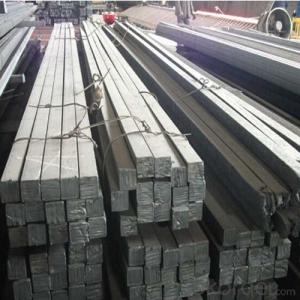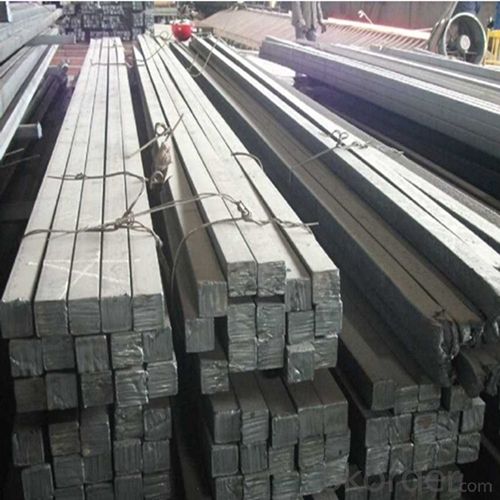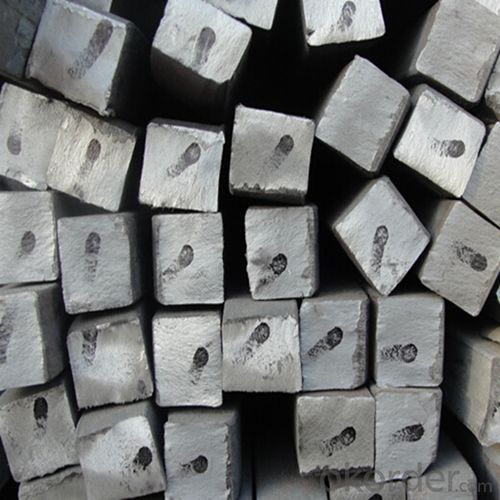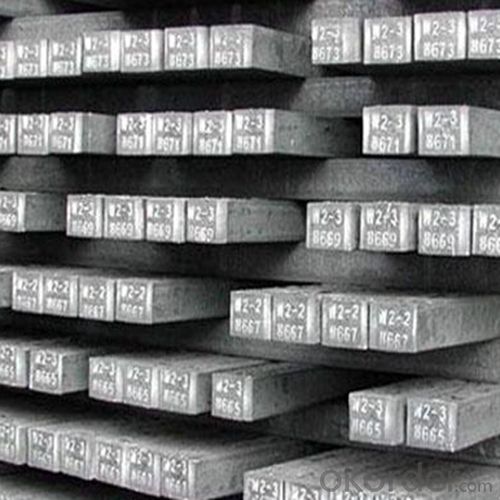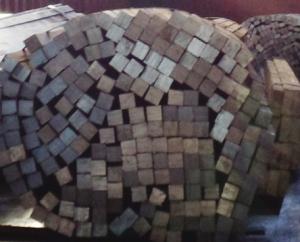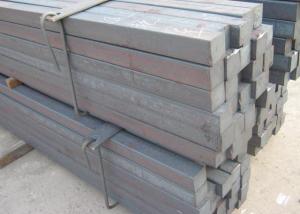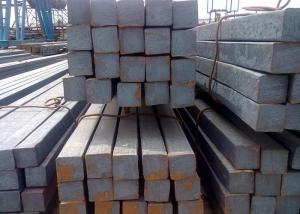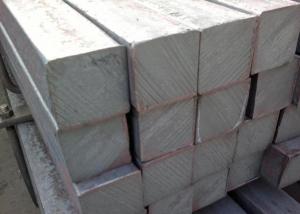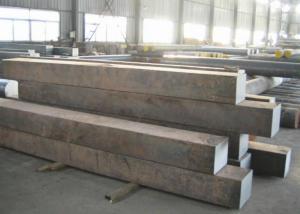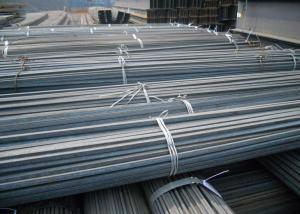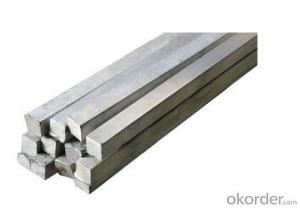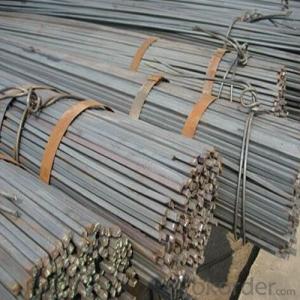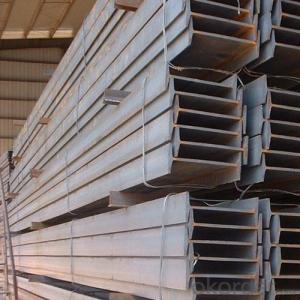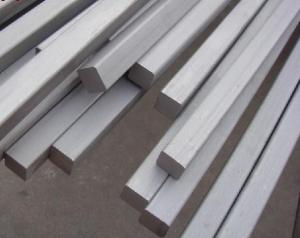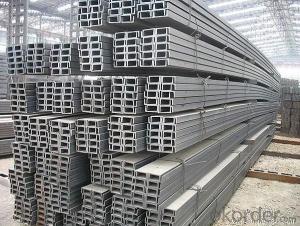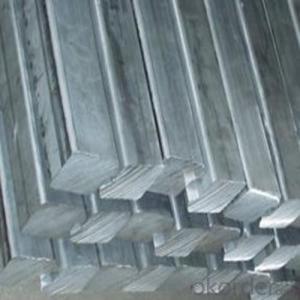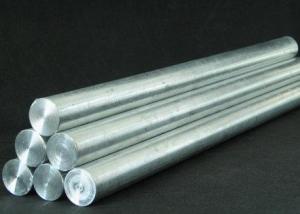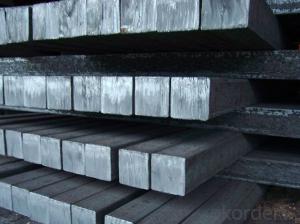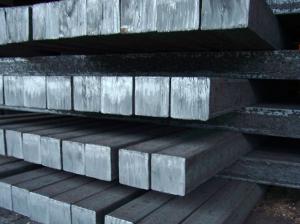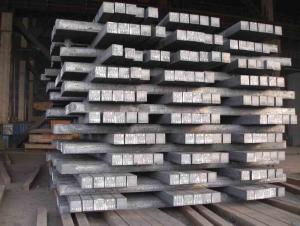Steel Square Bar Small Sizes with Length of 6 Meters
- Loading Port:
- Tianjin
- Payment Terms:
- TT or LC
- Min Order Qty:
- 25 m.t.
- Supply Capability:
- 10000 m.t./month
OKorder Service Pledge
OKorder Financial Service
You Might Also Like
1. Structure of Steel Square Bar Small Sizes description:
Steel square bar small sizes is a bar with square shaped cross-section. It is special case of equal sides. Before steel products are sold on the market, the steel must first be processed into more functional pieces. Raw steel cannot be of use while in its pure form, thus it has to be cast into shape. The freshly made steel, Steel square bar small sizes is still in the form of a metal bar or rectangle. Small sizes of Steel square bar small sizes are used in ship building.
2. Main Features of Steel Square Bar Small Sizes:
• Grade: Q235
• Type: Mild carbon steel
• A quadrilateral with four equal sides and four right angles.
• Vibration: The stiffness and mass are chosen to prevent unacceptable vibrations, particularly in settings sensitive to vibrations, such as offices and libraries.
• Local yield: Caused by concentrated loads, such as at the beam's point of support.
3. Steel Square Bar Small Sizes Images:
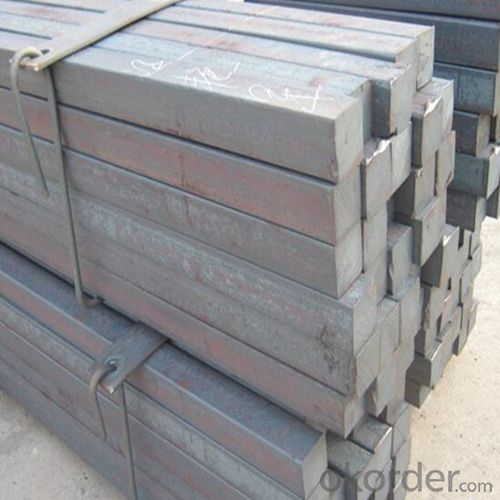
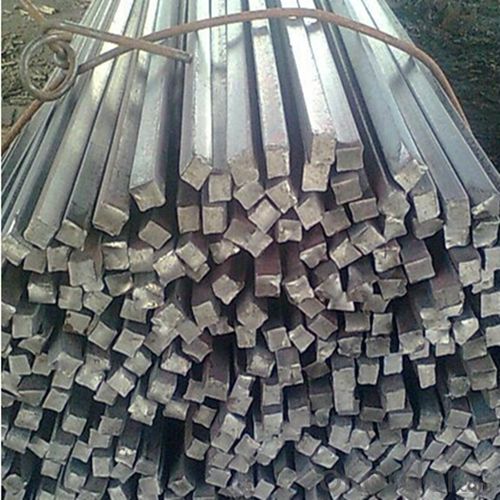
4. Steel Square Bar Small Sizes Specification:
Mechanical Properties | Grade | Steel diameter(mm) | |||
≤16 | 16~40 | 40~60 | 60~100 | ||
Yield Point Δs/MPa | Q195 | ≥195 | ≥185 | - | - |
Q235 | 235 | 225 | 215 | 205 | |
Tensile Strength | Q195 | 315~390 | |||
Q235 | 375~500 | ||||
Elongation δ5% | Q195 | ≥33 | ≥32 | - | - |
Q235 | 26 | 25 | 24 | 23 | |
5. FAQ
We have organized several common questions for our clients,may help you sincerely:
①What is the main material?
There are two types of Square Bar, one is hot rolled square bar and other one is cold drawn square bar. Our principal products is hot rolled square bar. We dedicate to products with material Q195 and Q235. We offer products with high quality and low price.
②How to inspect the quality?
We have a professional inspection group which belongs to our company. We resolutely put an end to unqualified products flowing into the market. At the same time, we will provide necessary follow-up service assurance.
③Is there any advantage about this kind of product?
Steel I beam bar IPE has a reduced capacity in the transverse direction, and is also inefficient in carrying torsion, for which hollow structural sections are often preferred.
- Q: What are some common uses for a steel square in furniture making?
- The steel square, also referred to as a framing square or carpenter's square, is a versatile tool extensively utilized in the craft of furniture making. Below are several common applications for a steel square in furniture making: 1. Measurement and marking: The primary function of a steel square is to accurately measure and mark straight lines and angles. With its long blade and shorter tongue, it enables precise measurements and marking of dimensions on various materials, including wood. This is crucial for making precise cuts and ensuring proper fitting of furniture pieces. 2. Squareness assessment: One of the most vital uses of a steel square is to determine squareness. By aligning the blade against the edge of a furniture piece or a joint, one can ascertain if it is perfectly square or necessitates adjustments. This guarantees proper alignment of furniture pieces and seamless fitting. 3. Angle determination: Steel squares often come equipped with angle markings, such as 45 degrees and 90 degrees. These markings enable furniture makers to easily determine and replicate specific angles required for various joints, bevels, or miter cuts. This ensures precise and accurate angles, resulting in better-fitted and visually appealing furniture. 4. Measurement transfer: A steel square can be employed to transfer measurements from one piece of wood to another. By aligning the square with a measurement point on one piece of wood and then marking the corresponding measurement on another piece, consistency and accuracy can be maintained throughout the furniture making process. 5. Assembly squaring: During furniture assembly, it is crucial to ensure that all parts are square and properly aligned. A steel square can be used to assess the squareness of assembled pieces and make necessary adjustments. This aids in achieving stability, structural integrity, and a professional finish for the furniture. 6. Geometric shape layout: Steel squares can also be utilized to lay out geometric shapes, such as squares, rectangles, and triangles. By utilizing the square's straight edges and angle markings, furniture makers can easily create accurate templates or patterns for various components of the furniture. In summary, the steel square is an indispensable tool in furniture making. Its ability to measure, mark, assess squareness, determine angles, transfer measurements, and lay out shapes makes it an essential companion for any furniture maker seeking precision, accuracy, and quality in their craftsmanship.
- Q: How do you use a steel square for marking roof gable angles?
- To mark roof gable angles using a steel square, follow these steps: Begin by determining the desired pitch or slope for the gable. Typically, this is specified as rise over run, such as 6/12 (indicating a 6-inch rise over a 12-inch run) or 8/12. Next, position the steel square on the gable rafter. Align the long side of the square, known as the blade, with the edge of the rafter. The short side, called the tongue, should rest against the top of the rafter. Adjust the steel square until the desired pitch or slope lines up with the edge of the rafter. Slide the square up or down the rafter until the markings on the square indicate the desired pitch. Once the steel square is correctly positioned, mark the angle on the rafter using a pencil or marker. Trace along the tongue of the square or extend lines from the markings on the square using a straight edge. Repeat this process for each gable rafter, ensuring that all angles are consistently marked. By using a steel square in this way, you can precisely mark the angles for roof gables, guaranteeing proper alignment and pitch. Remember to double-check your measurements and markings before making any cuts or adjustments to the rafters.
- Q: How do you use a steel square for marking and cutting finger joints?
- Achieving accurate and professional-looking results in your woodworking projects can be done by following these steps and utilizing a steel square for marking and cutting finger joints: 1. Begin by ensuring that your steel square is clean and free of any rust or debris, as this will aid in obtaining precise measurements and markings. 2. Measure and mark the desired length and width of each finger joint on the workpiece. Utilize a ruler or measuring tape to make exact measurements and transfer them onto the workpiece using the steel square. The length can be marked using the long side of the steel square, while the width can be marked using the shorter side. 3. Align the steel square with the edge of the workpiece, ensuring that it is perfectly square and flush. Secure the square in place by either using a clamp or holding it firmly against the workpiece. 4. Trace along the edges of the steel square onto the workpiece using a pencil or marking knife. This will create clear and precise guidelines for cutting the finger joints. 5. Repeat the marking process for each finger joint, ensuring that the measurements and alignments remain consistent throughout. 6. Once all the finger joints have been marked, proceed to cut along the marked lines using a saw or chisel. Take your time and work diligently to guarantee clean and accurate cuts. 7. Test the fit of the finger joints by joining the pieces together. If necessary, make any necessary adjustments or refinements to the joints using a file or sandpaper. By adhering to these steps and employing a steel square for marking and cutting finger joints, you can achieve precise and professional-looking results in your woodworking endeavors.
- Q: Can a steel square be used for checking the squareness of countertops?
- Yes, a steel square can be used for checking the squareness of countertops.
- Q: The difference between galvanized square and galvanized steel
- There is a difference in the quality of classification and can be processed into cold and hot dip galvanized pipe, galvanized pipe, galvanized pipe and galvanized belt can not be made, because of its wall thickness is thin, so the price will take the price dip galvanized pipe is much higher than galvanized pipe.
- Q: How to combine the paint and galvanized steel
- No, as long as you choose the special galvanized steel pipe paint, mcGZ type is ok!
- Q: Can a steel square be used for checking the levelness of floors?
- The levelness of floors cannot be checked using a steel square. A steel square, also called a carpenter's square, is mainly utilized in woodworking to measure and mark right angles. It is not intended for accurately assessing surface levelness. To ensure the levelness of floors, it is recommended to employ a tool like a spirit level or laser level. These tools are specially designed for this task and offer precise measurements of horizontal or vertical levelness.
- Q: Can a steel square be used for checking the squareness of a door frame opening?
- Yes, a steel square can be used for checking the squareness of a door frame opening. A steel square, also known as a framing square or a carpenter's square, is a versatile tool commonly used in carpentry and construction. It has a right angle shape, with one long arm and one shorter arm, allowing it to be used for measuring and checking angles, as well as testing the squareness of objects. To check the squareness of a door frame opening, you can place the steel square against the inside corner of the frame, ensuring that the long arm aligns with one side of the frame and the shorter arm aligns with the other side. If the frame is perfectly square, the square's edges will lie flush against both sides of the frame. However, if the frame is not square, there will be a gap between the square and one or both sides of the frame, indicating that adjustments need to be made. Using a steel square provides a reliable and accurate method for checking the squareness of a door frame opening. It allows you to identify any discrepancies and make the necessary adjustments to ensure that the door will fit properly and function correctly.
- Q: Can a steel square be used for checking the squareness of a table saw fence?
- Yes, a steel square can be used for checking the squareness of a table saw fence. A steel square, also known as a carpenter's square or framing square, is a tool with a right-angle shape that can be used to ensure that the edges and corners of a workpiece or tool are perfectly square. To check the squareness of a table saw fence, simply place the steel square against the fence and align it with the blade of the table saw. If the square is properly aligned, the blade should be perpendicular to the fence, indicating that the fence is square. However, it is important to note that while a steel square can provide a quick and easy way to check squareness, it is always recommended to use a more precise measuring tool, such as a dial indicator or precision square, for accurate results.
- Q: How do you use a steel square to mark a line perpendicular to an edge?
- In order to mark a line perpendicular to an edge using a steel square, the following steps should be followed: 1. Place the steel square on the edge of the material you wish to mark, ensuring that one arm of the square is aligned with the edge of the material. 2. Securely hold the square in place with one hand, ensuring that it remains immobile throughout the marking process. 3. With your other hand, take a pencil or marking tool and position it against the inner edge of the square's alternate arm. 4. While maintaining contact between the pencil and the square, glide it along the inner edge of the arm, thereby marking a line on the material. 5. Continue sliding the pencil along the inner edge until the desired length of the perpendicular line is achieved. 6. Once the line has been marked, verify its perpendicularity to the original edge by using a measuring tape or a second square. 7. If necessary, make any adjustments to ensure that the line is perfectly perpendicular prior to proceeding with your project. By utilizing a steel square in this fashion, you can accurately mark a perpendicular line to an existing edge, thus ensuring precise and straight cuts or construction.
Send your message to us
Steel Square Bar Small Sizes with Length of 6 Meters
- Loading Port:
- Tianjin
- Payment Terms:
- TT or LC
- Min Order Qty:
- 25 m.t.
- Supply Capability:
- 10000 m.t./month
OKorder Service Pledge
OKorder Financial Service
Similar products
Hot products
Hot Searches
Related keywords
